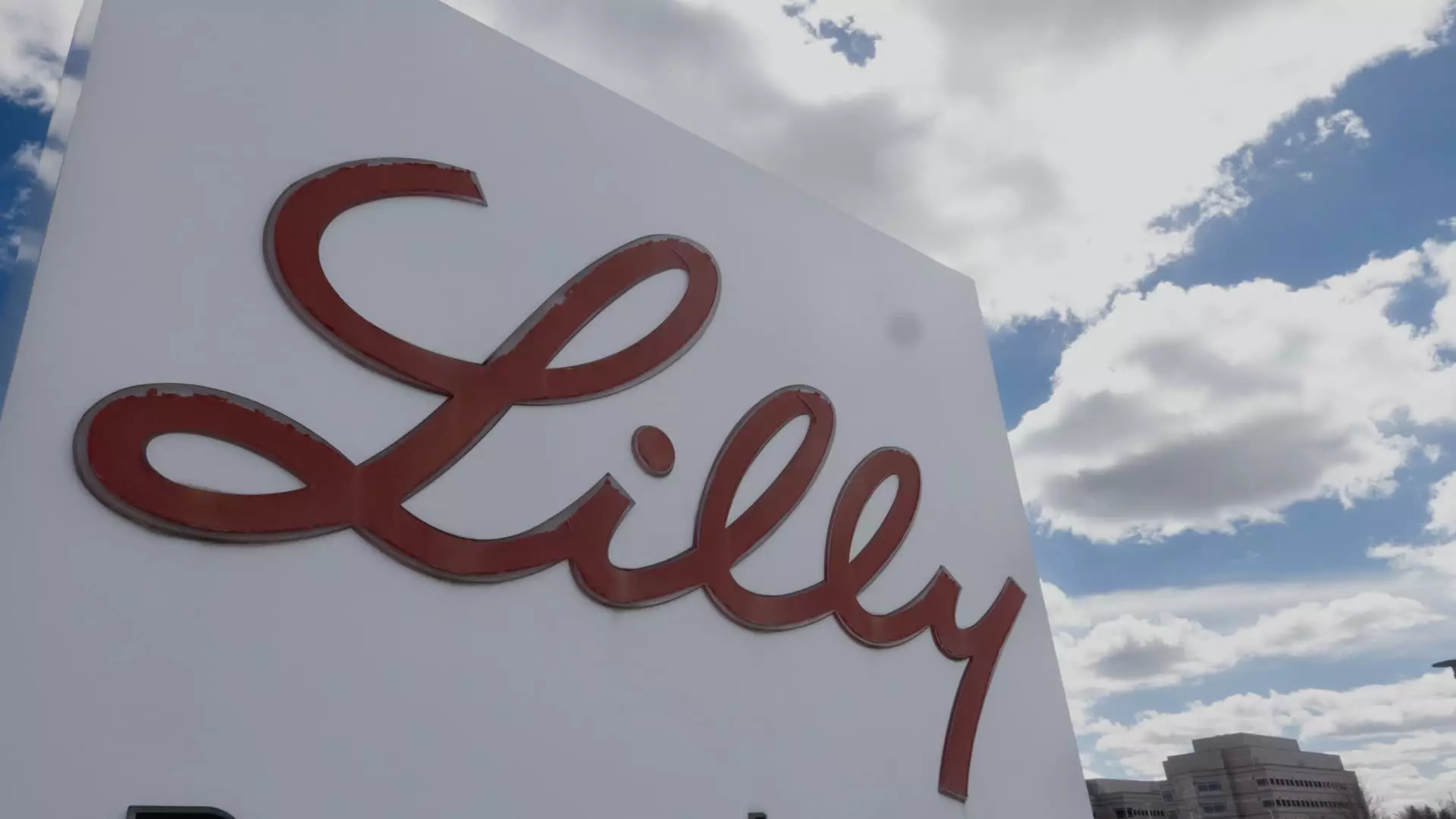In a significant move that underscores the evolving landscape of the pharmaceutical industry, Eli Lilly announced on Wednesday its plans to invest a staggering $27 billion in the establishment of four new manufacturing sites across the United States. This massive investment is primarily a response to the skyrocketing demand for its high-profile diabetes and weight-loss therapies. Beyond addressing immediate market needs, this strategy is also reflective of broader political dynamics as pharmaceutical firms seek to align themselves with government priorities on domestic manufacturing.
The commitment to invest in U.S. infrastructure isn’t new for Eli Lilly; this latest announcement bumps its total investments in American manufacturing to over $50 billion in recent years. Much of this financial commitment has been funneled into new plants and expanding existing sites, aimed at alleviating supply pressures that have long plagued popular medications. This trend highlights the company’s dual objectives: meeting rising consumer demand and fortifying its logistical independence from international supply chains.
Among the new factories, three will focus on producing active pharmaceutical ingredients (APIs) crucial for the company’s leading drugs, including tirzepatide, which features in both the obesity drug Zepbound and the diabetes treatment Mounjaro. The fourth facility is set to enhance Eli Lilly’s capabilities for future injectable medications, signaling not just growth but also a commitment to innovation within the pharmaceutical sector.
Eli Lilly’s Chief Executive Officer, David Ricks, expressed his enthusiasm for the company’s research pipeline, which extends well beyond current offerings. The firm’s ambitions include developing treatments for conditions such as cancer, Alzheimer’s disease, immunological disorders, and cardiovascular health. This strategic expansion of their manufacturing footprint is a clear indication that Eli Lilly is positioning itself to be a leader in multiple therapeutic areas, effectively aiming to secure its place in a competitive market.
The burgeoning market for GLP-1 receptor agonists—a category that includes Zepbound and Mounjaro—has moved into the spotlight alongside Novo Nordisk’s popular treatments like Wegovy and Ozempic. Analysts project that the global demand for obesity medications could surpass $150 billion annually by the early 2030s, creating intense competition among pharmaceutical giants. In this high-stakes environment, maintaining a robust supply chain is critical; Eli Lilly’s strategy aims to ensure that eligible patients have access to branded medications rather than relying on potentially unsafe compounded alternatives.
As the FDA recently declared the shortage of tirzepatide resolved, Eli Lilly anticipates smoother supply dynamics moving forward. Addressing previous supply challenges is vital, especially given the surge of unapproved alternatives that cropped up during shortages, which presented both safety and efficacy concerns for consumers.
The new manufacturing sites are projected to create significant economic opportunities, generating over 3,000 jobs for engineers and research scientists, along with an additional 10,000 construction jobs as the facilities are developed. This job creation aligns with Eli Lilly’s broader commitment to bolstering the U.S. economy and reflects a trend where pharmaceutical companies are increasingly viewed as integral players in national economic recovery initiatives.
Ricks highlighted the transformative impact of the Tax Cuts and Jobs Act passed in 2017, noting its pivotal role in incentivizing corporate investments in U.S. manufacturing. The company argues that continued support for these tax structures is essential for promoting further investment in domestic capabilities, particularly as critical provisions are set to expire at the end of the year.
Eli Lilly’s investments represent a bold statement in the pharmaceutical arena, reaffirming the idea that companies must adapt to both market conditions and evolving political climates. In a time of fluctuating global supply chains and increasing consumer expectations for accessibility and reliability, the firm’s initiatives underscore its commitment not just to current therapies, but to long-term innovations that could reshape treatment paradigms across various diseases.
As drugmakers like Novo Nordisk also ramp up manufacturing to meet demand, the landscape is becoming more competitive than ever. This strategic pivot — underpinned by substantial investments — sets the stage for a new era of pharmaceutical manufacturing, where domestic capabilities may determine the winners in the race to deliver cutting-edge therapies to patients worldwide.


Leave a Reply